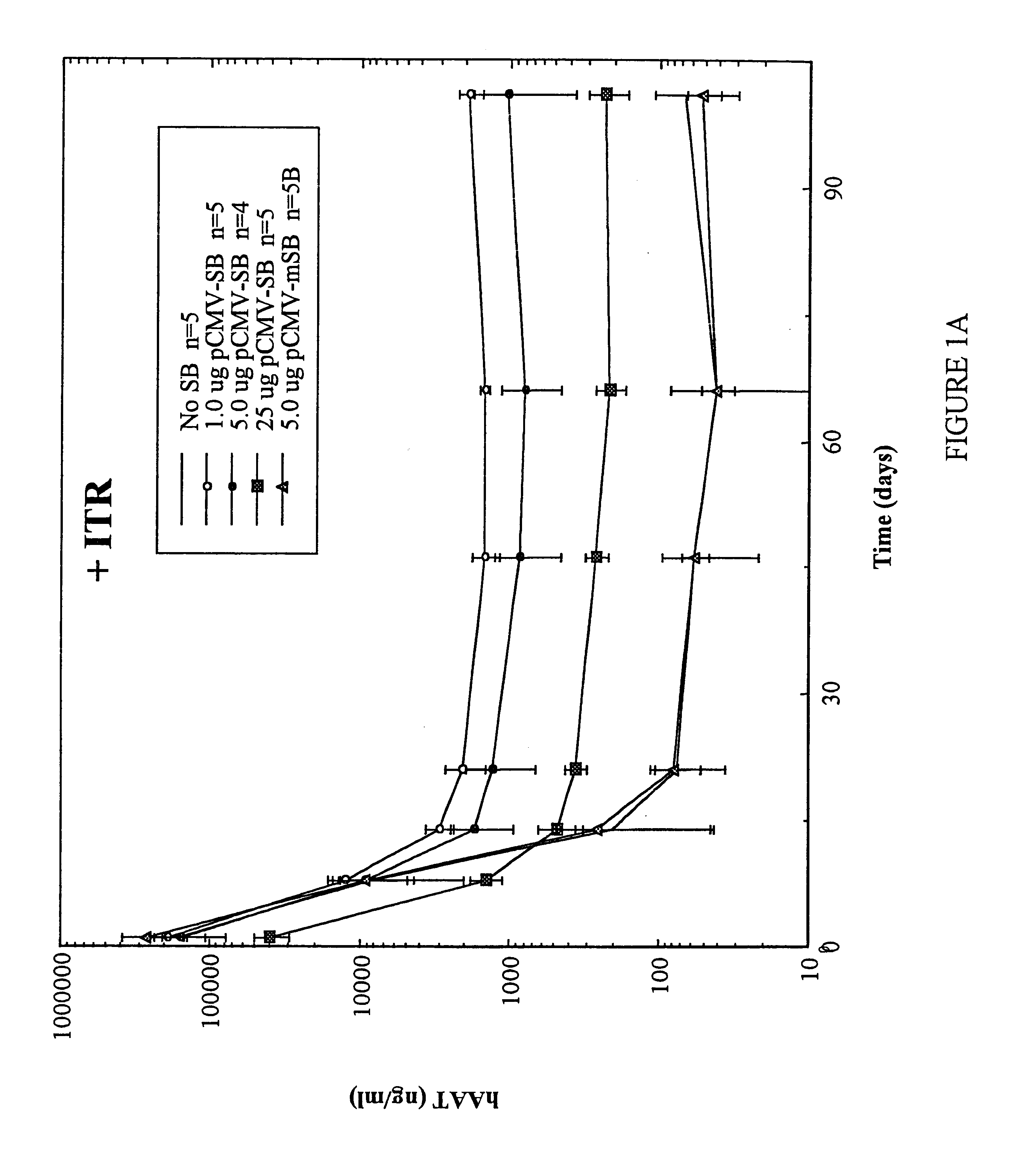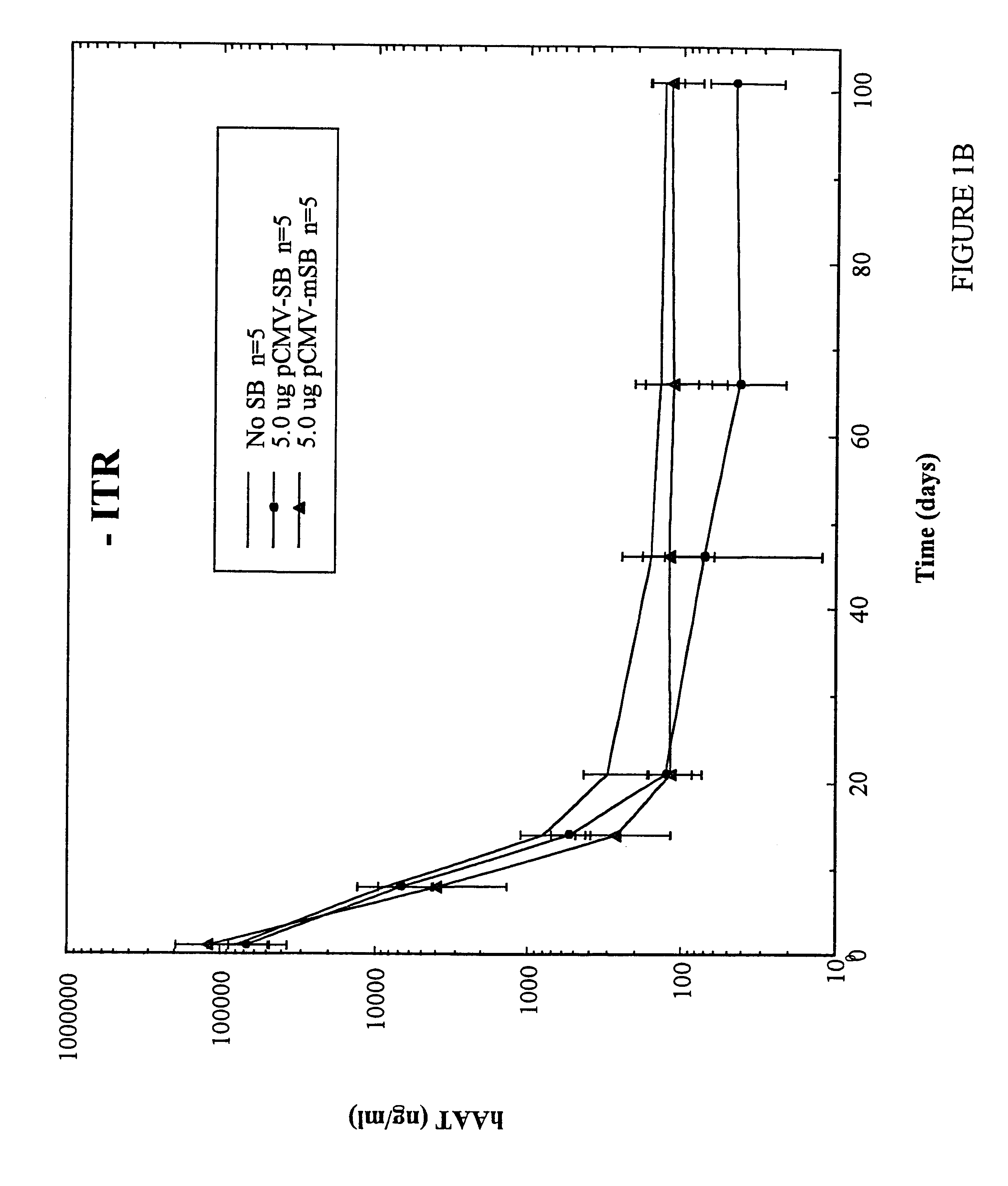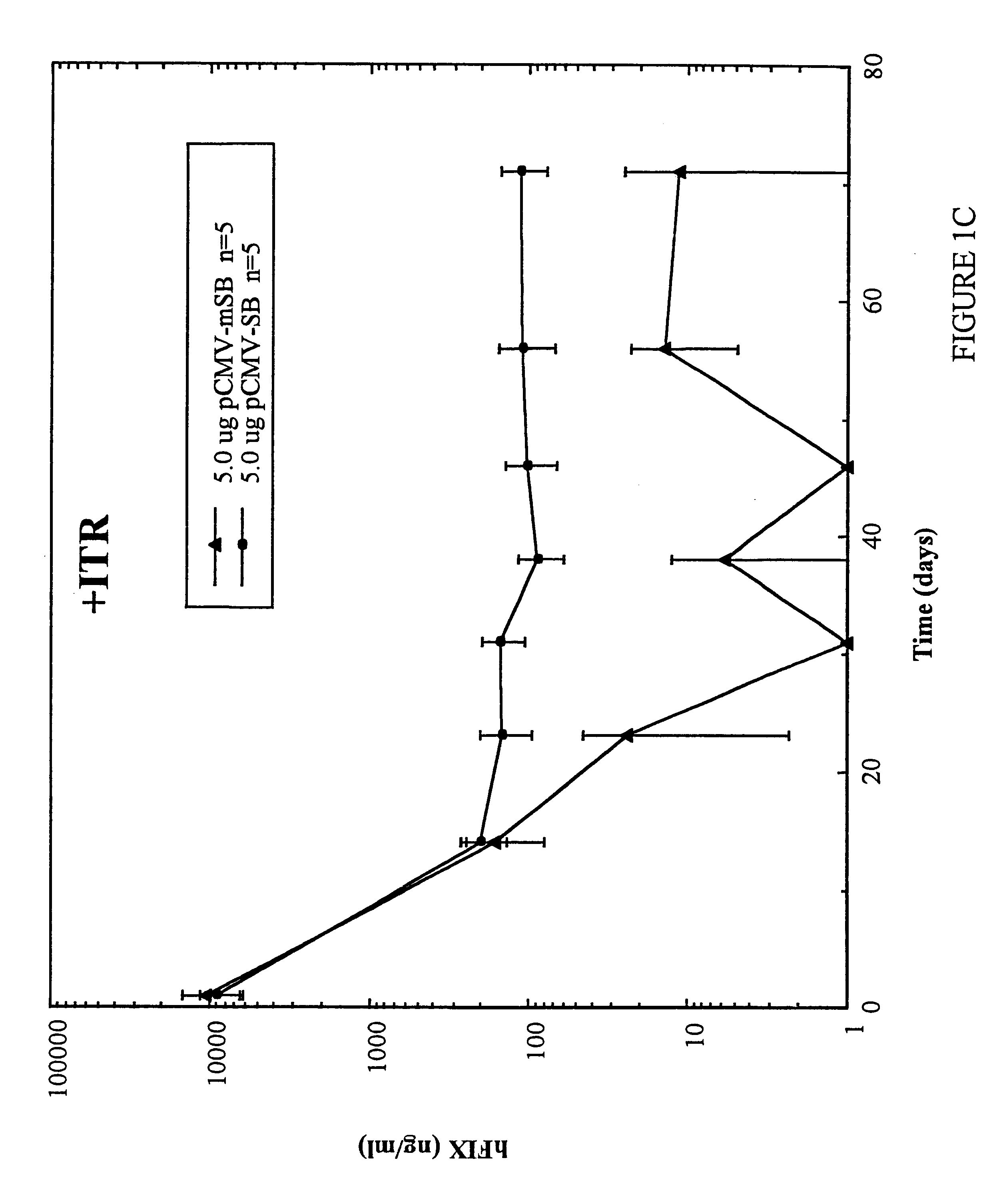Methods of in vivo gene transfer using a sleeping beauty transposon system
a transposon system and in vivo technology, applied in the direction of biocide, genetic material ingredients, biochemistry apparatus and processes, etc., can solve the problems of slow recombination events, insufficient homologous recombination protocol, and insufficient use of optimal in many situations
- Summary
- Abstract
- Description
- Claims
- Application Information
AI Technical Summary
Benefits of technology
Problems solved by technology
Method used
Image
Examples
Embodiment Construction
Methods and compositions for introducing an exogenous nucleic acid into the genome of at least one cell of a multicellular organism are provided. In the subject methods, a Sleeping Beauty transposon system that includes a source of Sleeping Beauty transposase activity and a Sleeping Beauty transposon containing the exogenous nucleic acid are administered directly to the multicellular organism. In vivo administration results in integration of the transposon, and consequently the exogenous nucleic acid, into at least one target cell of the multicellular organism. The subject methods find use in a variety of different applications, including in vivo gene transfer for use in, e.g. gene therapy applications.
Before the subject invention is described further, it is to be understood that the invention is not limited to the particular embodiments of the invention described below, as variations of the particular embodiments may be made and still fall within the scope of the appended claims. I...
PUM
| Property | Measurement | Unit |
|---|---|---|
| size | aaaaa | aaaaa |
| antibiotic resistance | aaaaa | aaaaa |
| electrophoresis | aaaaa | aaaaa |
Abstract
Description
Claims
Application Information
 Login to View More
Login to View More - R&D
- Intellectual Property
- Life Sciences
- Materials
- Tech Scout
- Unparalleled Data Quality
- Higher Quality Content
- 60% Fewer Hallucinations
Browse by: Latest US Patents, China's latest patents, Technical Efficacy Thesaurus, Application Domain, Technology Topic, Popular Technical Reports.
© 2025 PatSnap. All rights reserved.Legal|Privacy policy|Modern Slavery Act Transparency Statement|Sitemap|About US| Contact US: help@patsnap.com



